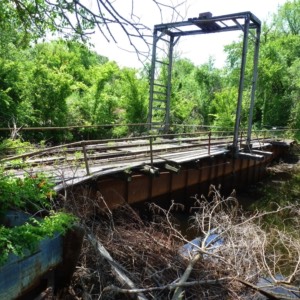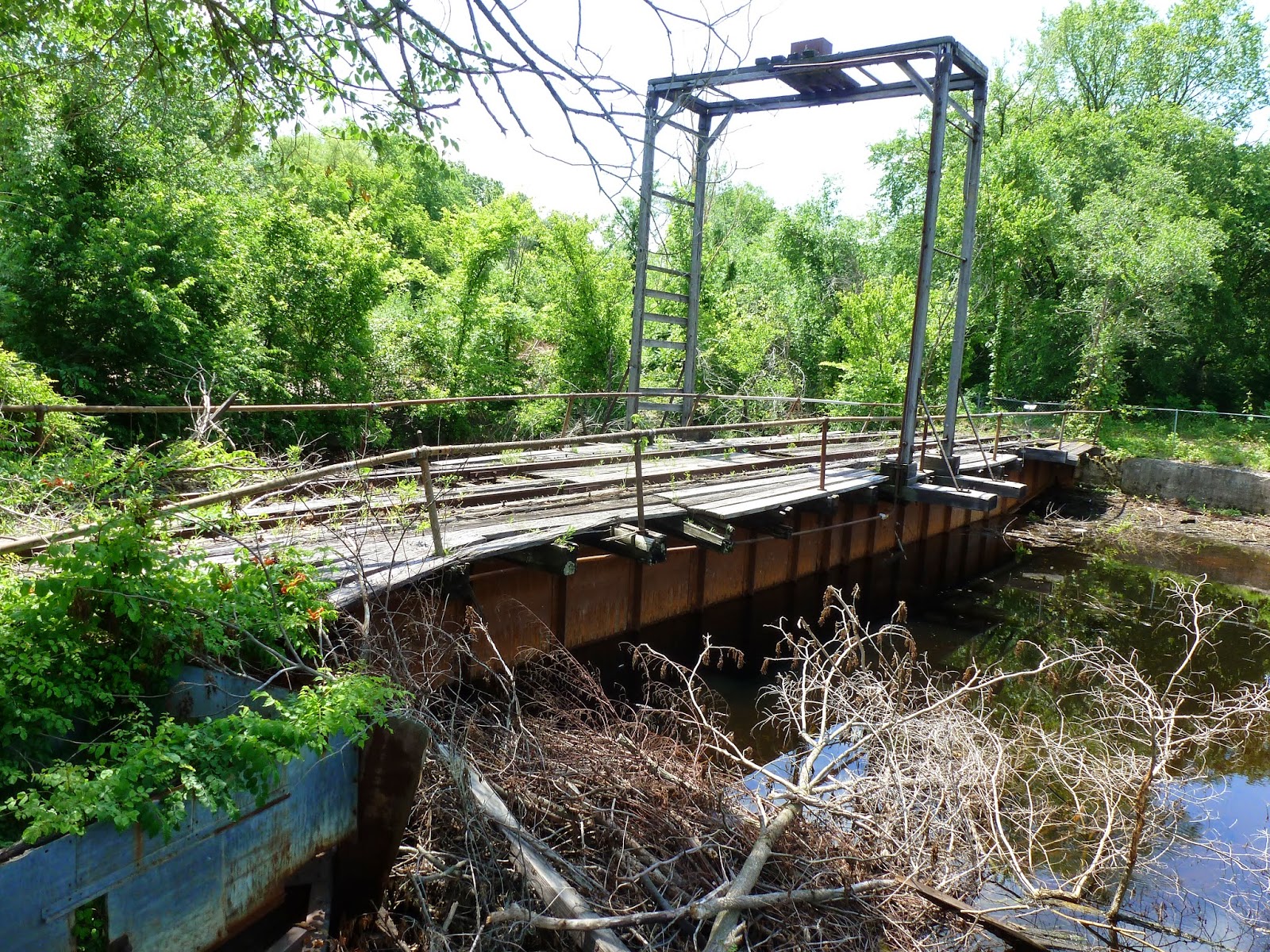Franklin Yard
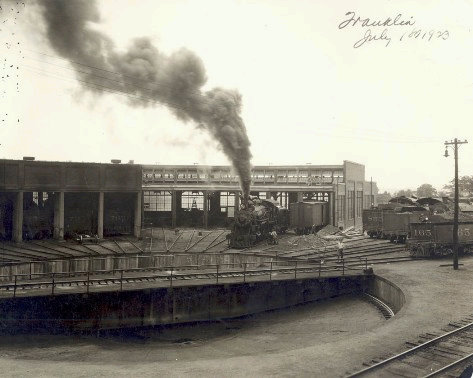
In 1906, the Businessmen's Association of New Franklin acquired the land for the railroad to build a reservoir to supply water for the mighty steam engines. This secured the permanent division point for location at the Franklin Junction yards. The Katy Reservoir, as it became known, lies just to the north of the railroad yards at Franklin.
The expenditure of 15.5 million dollars by the Missouri-Kansas-Texas Railway in 1923 for improvements to the railroad yards, again assured the growth and continuation of the railroad division point location in Franklin Junction.
Construction of a forty-room hotel, a new powerhouse, an addition to the roundhouse and a new 90-foot turntable, were built by the Katy, along with machine stops, a new depot and office buildings. An immense oil tank 30 feet high and 114 feet in diameter with the capacity of 55,000 barrels of oil was erected to store oil for locomotives. Franklin became an important railroad center in 1923. Katy payroll was nearly a half-million dollars in 1930-31, with the New Franklin-Franklin area being the second largest of the companies in the state.
The beginning of WWII, 1939-1945, produced floods of rail tonnage and consequent year of prosperity for all railroads. Unfortunately, coal, chemicals and petroleum derivatives needed for treating the railroad ties were in short supply, as was good quality timber. Some twenty to twenty-five years later the wartime installation of inferior ties and the long stretches of fifty and ninety pound rails posed serious problems in the maintenance programs of the Katy as the postwar fortunes of the Katy deteriorated.
By the 1980s, it was evident the once undaunted, proud, thundering rails of the pioneering Katy were losing steam. The Katy was sold to the Union Pacific Railroad in 1986 and all her rails across Missouri lay abandoned and silent.
In the spring of 1990, the Missouri Department of Natural Resources transformed the 225 mile long rail beds into the Katy walking and bicycling Trail State Park, following the diverse and beautiful countryside of the once thundering rails known as the "Katy."
Franklin Yard, at milepost 189, was the site of a large yard and train master’s office. The yard facilities included a roundhouse, back shop, water treatment plant, car department, scales, and diesel servicing.
Leon Sapp was the MKT Trainmaster for this division around 1970, and according to Leon, the yard here was large but underutilized. Rail was 60-70 pounds, and by September 1970, was being cannibalized in places for use on the Moberly branch, which had very light rail.
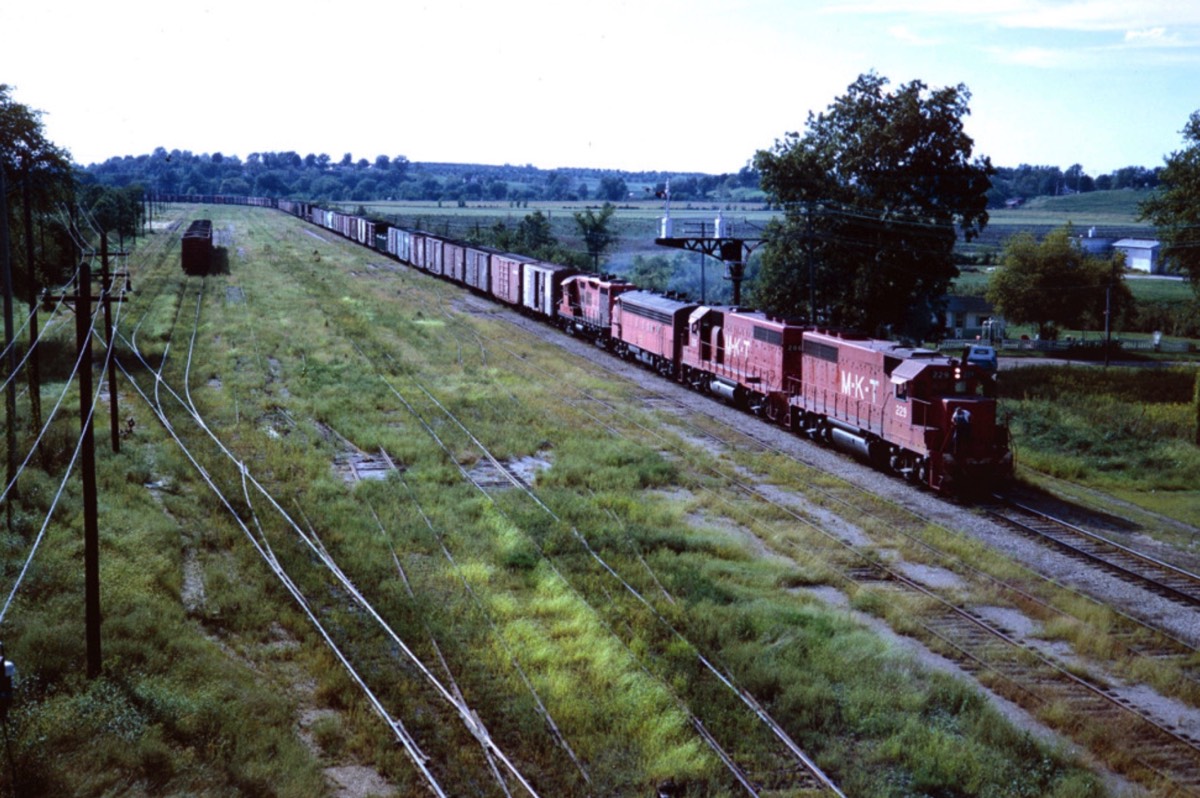
Extra train at east end of Franklin Yard, head toward St. Louis
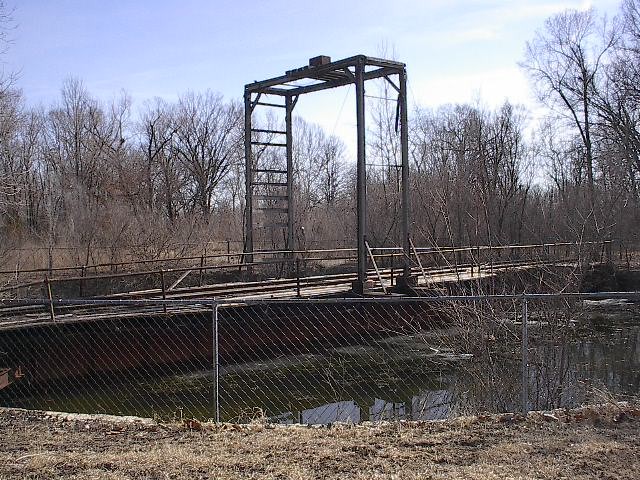
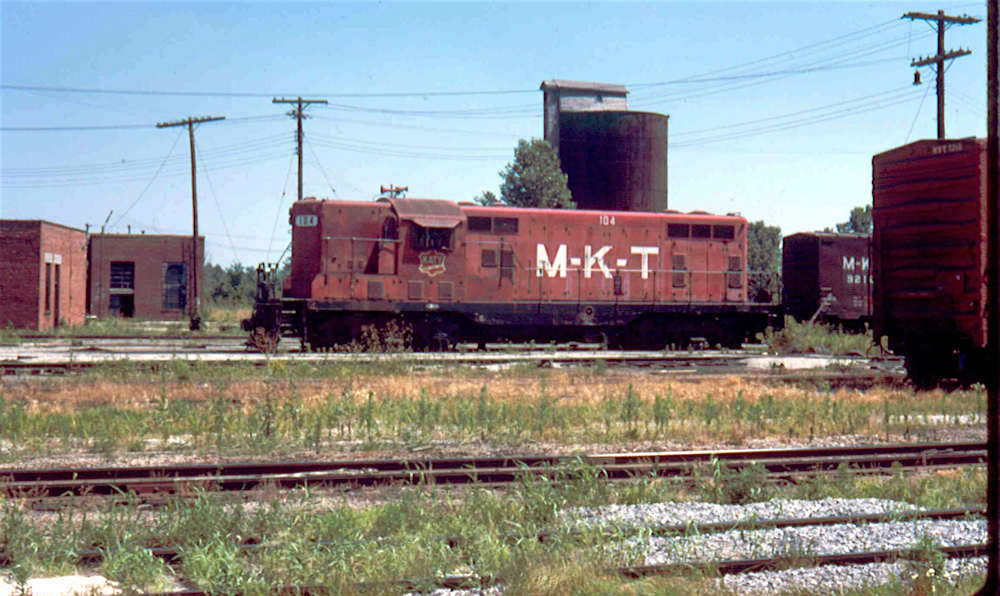
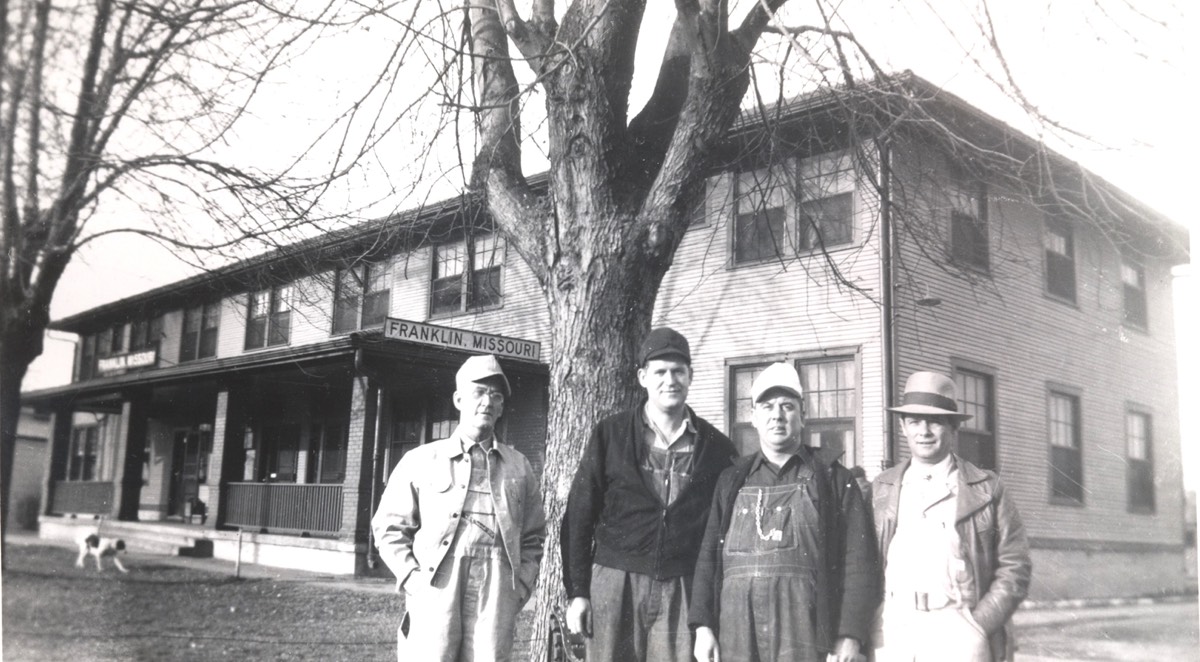
Katy train crew at the trackside hotel
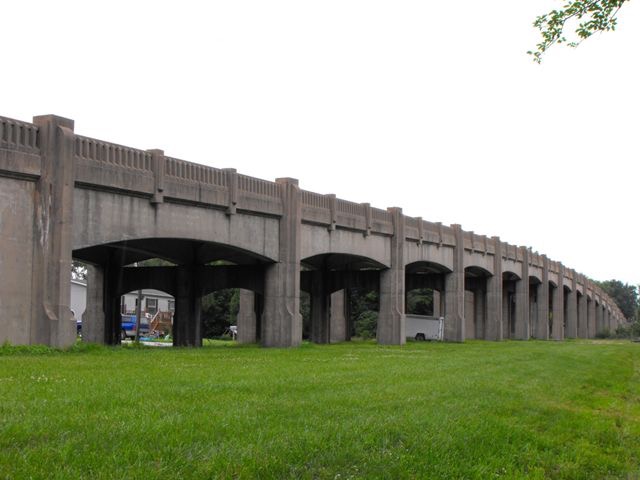
The New Franklin Viaduct that crosses over the east end of Franklin Yard
Recent pic of the FY turntable.
Looking pretty sad,
(click photo to embiggen)
Looking pretty sad,
(click photo to embiggen)
